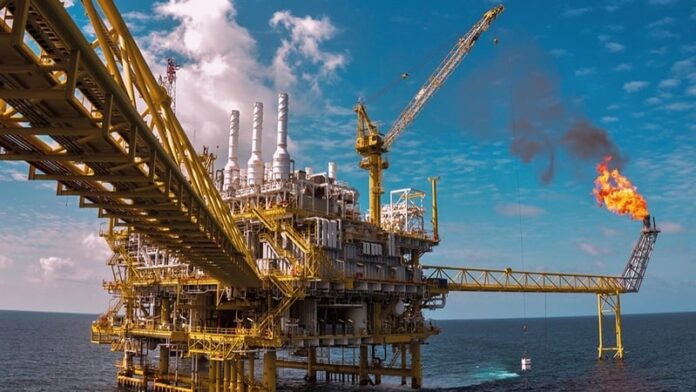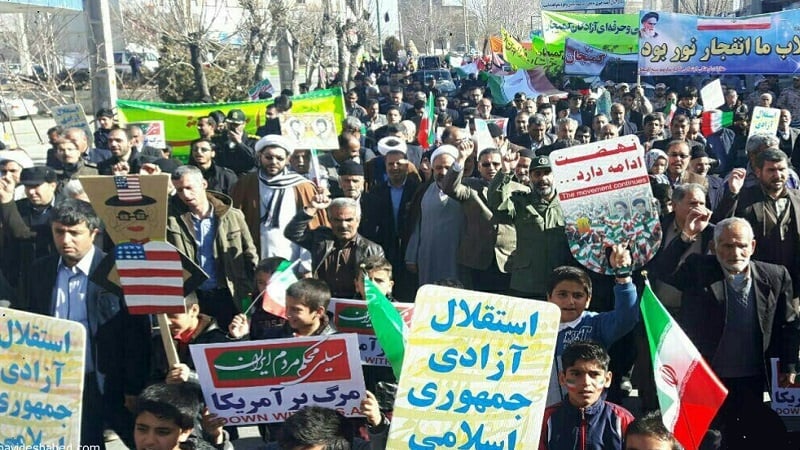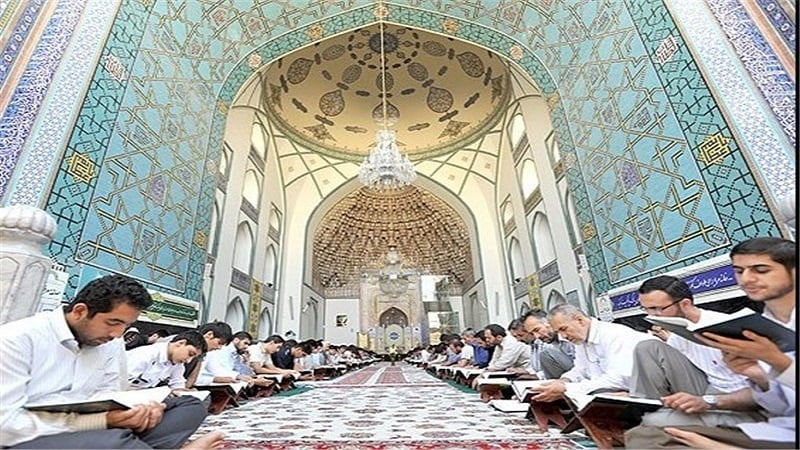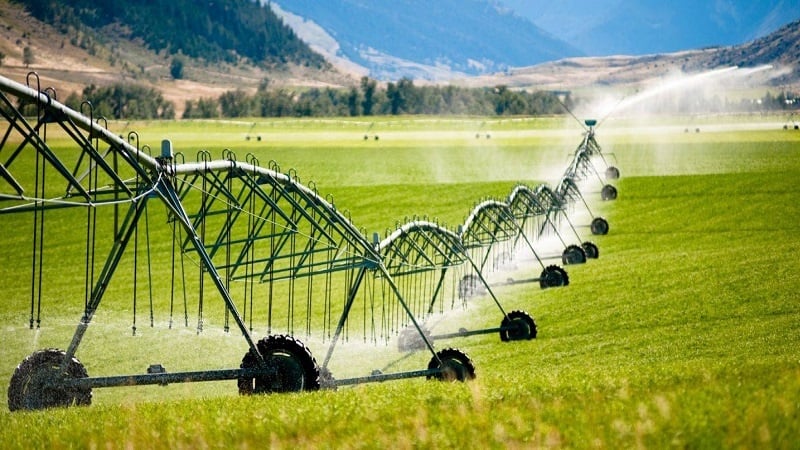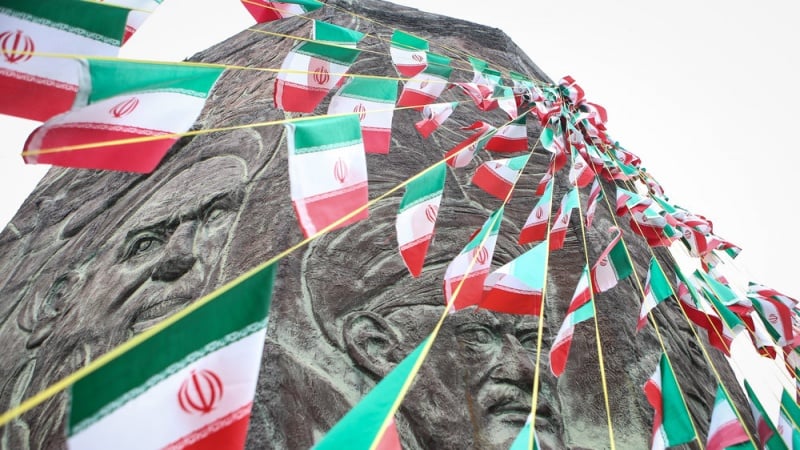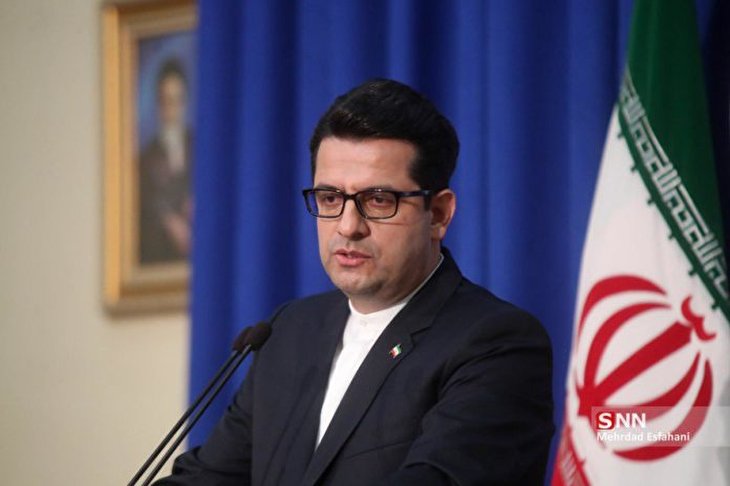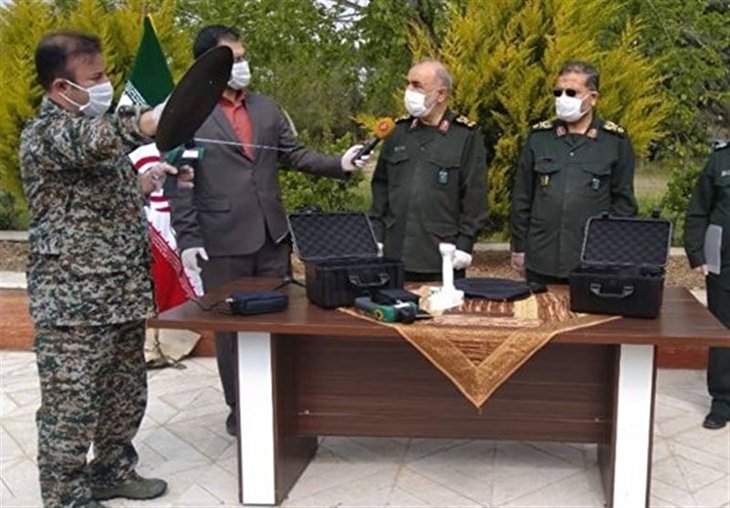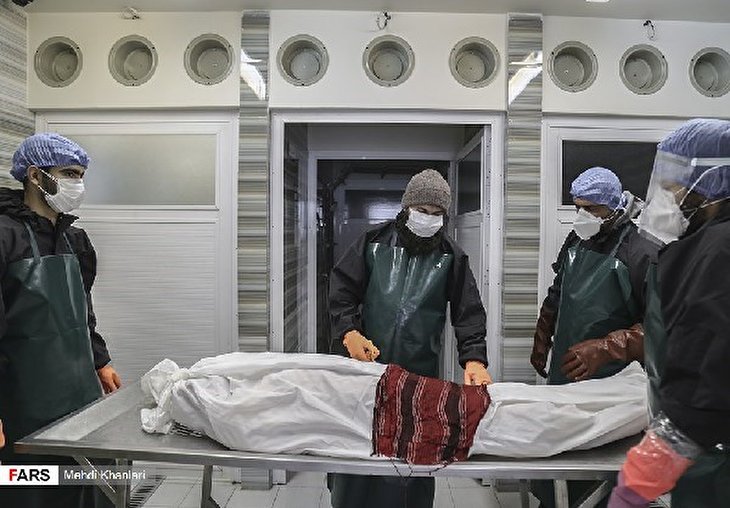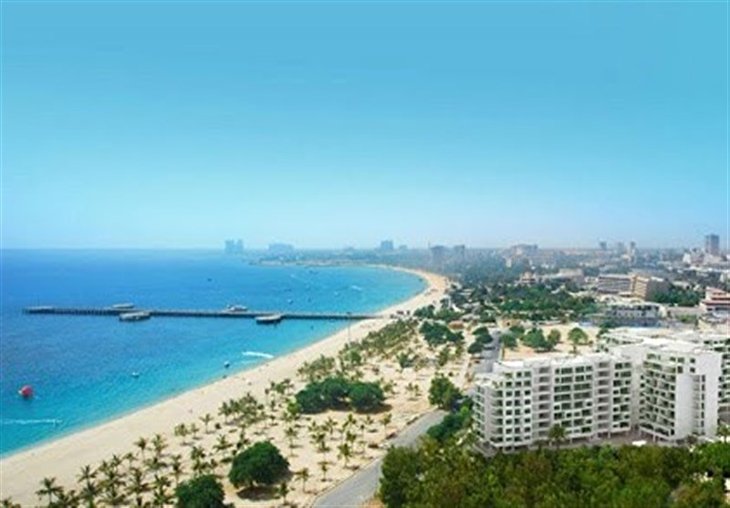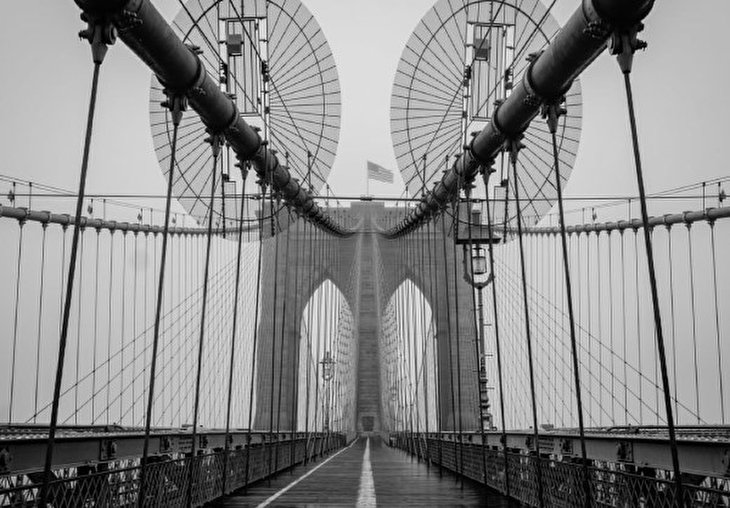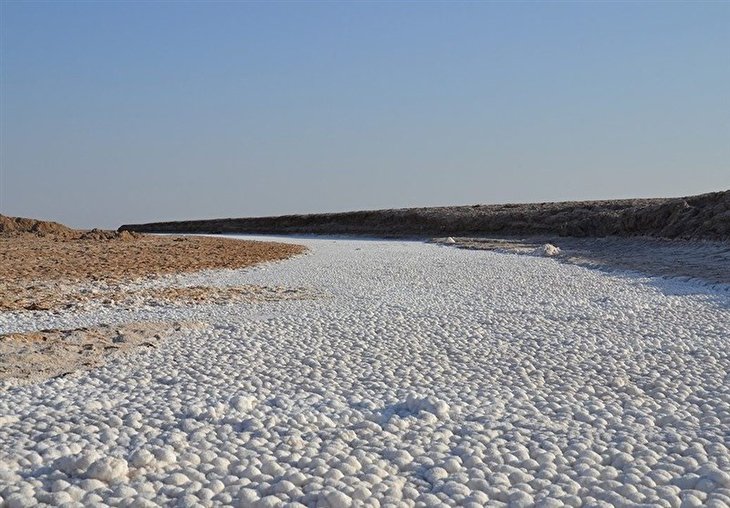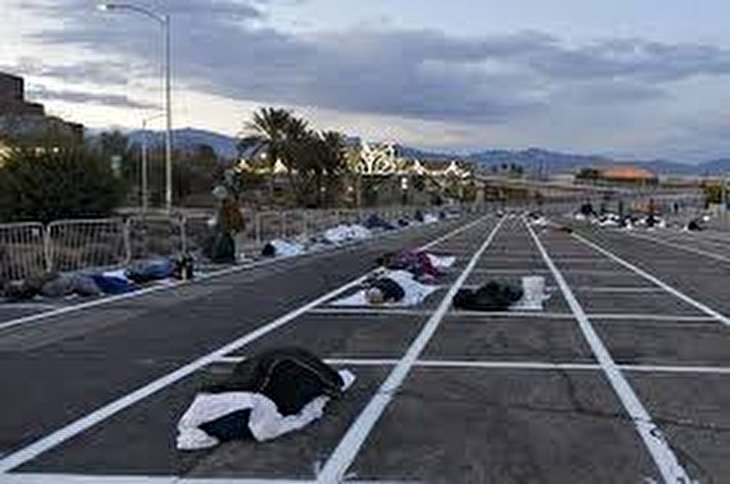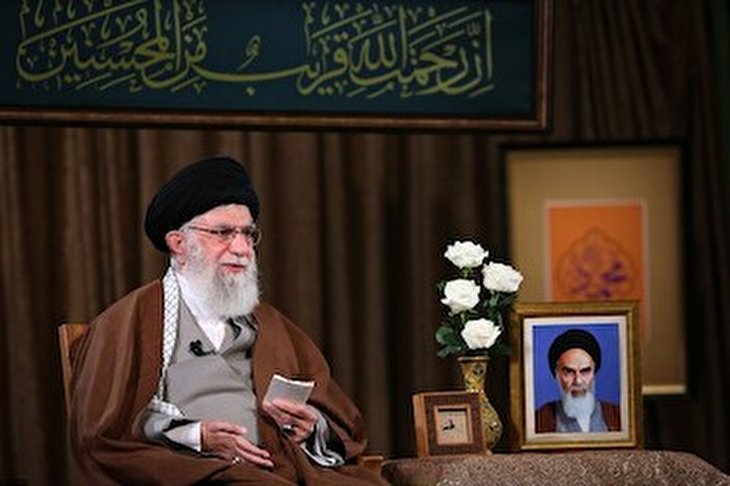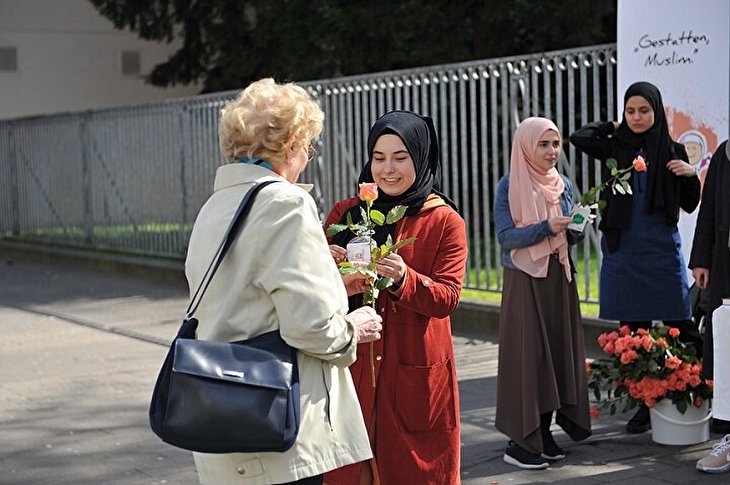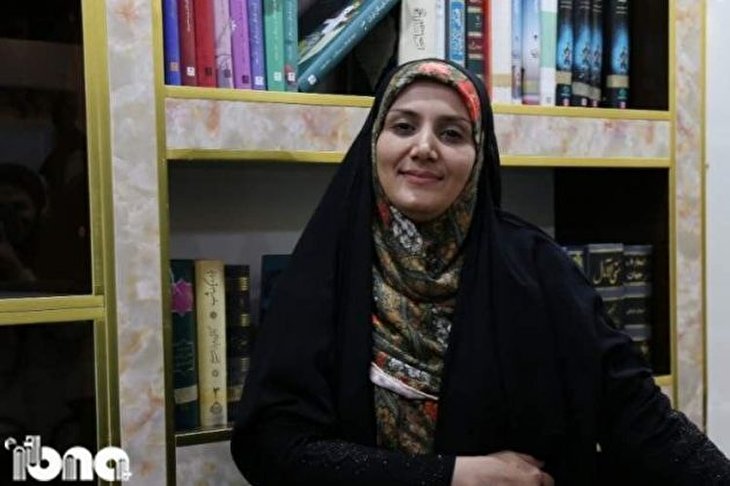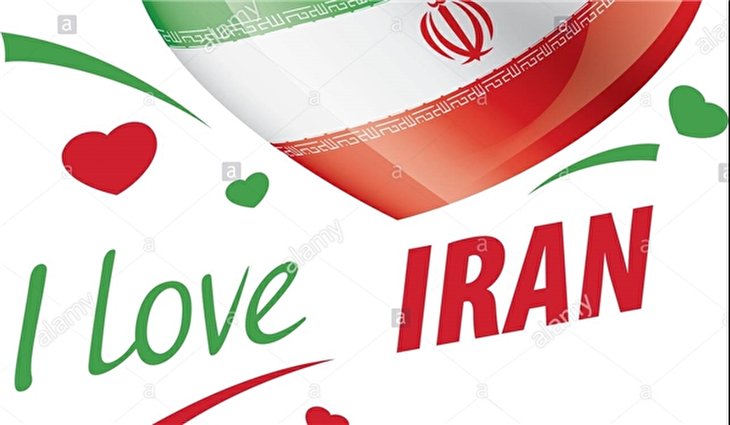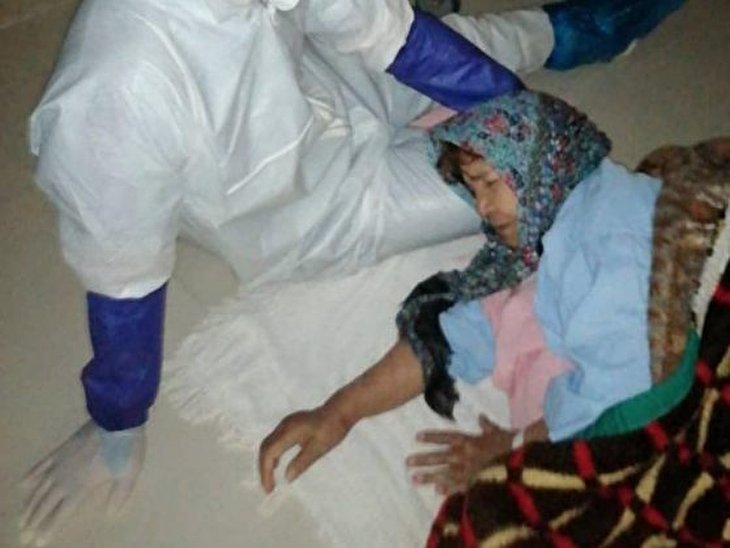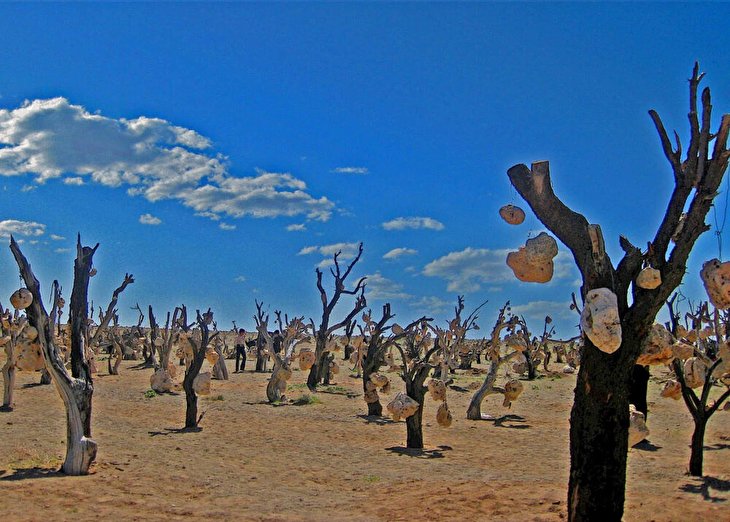On the eve of the fortieth anniversary of the victory of the Islamic Revolution, the outcome of Iran’s uprising against the US-backed rule of Mohammad Reza Pahlavi is a hot topic of discussions among Iranians.
In the referendum for determining the form of government, over 98% of the Iranian nation voted for the Islamic Republic system. Now, 40 years after the resounding triumph of the greatest revolution in the 20th century, the Islamic Republic has proved its efficacy in various domains in spite of all-out 8-year war, economic sanctions, political pressures and media hype.
The Iranian nation pursued numerous objectives in their uprising against the despotic Pahlavi regime, which were summarized in three demands, namely, independence, freedom and Islamic government. The Islamic Republic is, no doubt, the greatest achievement of the Islamic Revolution.
This popular system of government has by far exceeded the criteria of the western democracy and has in fact marginalized it as it is popular and democratic in the real sense of the word. The Leader of the Islamic Revolution, Ayatollah Khamenei, says, "We brought a novel experience. We adopted democracy from religion. Our democracy is accompanied by spirituality and religion; hence it became religious popular rule. It became the Islamic Republic.”
Velayat-e Faqih
Another important principle in the Islamic Republic is "Velayat-e Faqih” which pertains to the leadership of the system. This leader enjoys certain criteria and specifications. The Islamic Republic of Iran’s Constitution has mentioned the characteristics of Vali-e Faqih (supreme jurisprudent). They are piety, justice, courage, management, prudence, awareness of domestic and foreign political issues and mastery of Islamic sciences.
Vali-e Faqih as the leader of the Islamic Revolution is appointed by the Assembly of Experts who are in turn elected by the people’s votes. The 4-decade experience of the Islamic Republic clearly shows that the leader plays the prime role in preservation of the system, the rights of the people and resolving the internal and external problems.
Great Freedom
The Islamic Revolution granted the Iranian nation freedom in various fields. The Iranian nation had been suppressed for centuries, especially during the Pahlavi regime. Any dissent would be quenched and opponents would be jailed, tortured and murdered. In the Islamic Republic of Iran, people are free to hold legal gatherings and meetings and express their opinion in various matters. They elect the officials of the country including the president, members of parliament and city councils. They also elect the members of the Assembly of Experts who appoint the leader.
Through the 4 decades of the Islamic Republic, 36 elections have been held including 3 referendums, 12 presidential elections, 10 parliamentary elections, 5 Assembly of Experts elections, 5 elections for city and village councils and an election for the Constitution.
The massive turnout of the people at ballot boxes indicates that they use the best opportunity that the Islamic Republic has granted them to determine their fate. Moreover, religious minorities, as part of the Iranian nation, enjoy freedom and have representatives in the parliament.
As for the media, the Islamic Revolution has granted freedom to the media to express their ideas and criticize the officials. Plus, after the Islamic Revolution, the written and audio-visual media have dramatically increased in number.
Free from Imperialism
Independence was another demand of the Iranian nation in their revolution. This stemmed from the fact that the former regime was fully dependent on the US and it took no decision without the Washington’s information beforehand.
Other countries like Britain, France and Germany were also complicit with the US in plundering the resources of Iran. Even the fabricated regime in Tel Aviv was engaged in looting the resources of the country. This was very humiliating and the nation couldn’t tolerate it.
The Islamic Revolution became a role model for other nations who seek to come out of the yoke of domineering powers and determine their affairs independently.
Now, the Islamic Republic of Iran, relying on the votes of people, administers the country without foreign interference and this has infuriated the western colonialists, especially the Great Satan the US. Plus, Iran continues taking independent stances strongly in accordance with its national interests and support of the oppressed and downtrodden people in the world.
Iranian Culture Revived
One of the factors for the Iranian people’s uprising against the regime of Mohammad Reza Shah was that the regime of Shah was opposite to Islamic culture and values and tried to promote immorality in society.
The Islamic Revolution put an end to this evil situation and the promotion and propagation of religion replaced it. The religiosity and spirituality of the revolution is so important that Ayatollah Khamenei said, "The message of the Islamic Revolution is the message of spirituality, attention to spirituality and bringing the element of spirituality in human life and heeding of morality and God.”
During 4 decades, ample activities have been done for expansion of the Islamic culture. Mosques have played such an important role in this regard that Imam Khomeini called mosques as trenches of the revolution. In view of this, the number of mosques has approximately tripled compared with before the revolution. Every year, millions of Iranians benefit from the spiritual climate of mosques.
The quantity and quality of religious ceremonies have increased. The mourning ceremonies for Imam Hussein and other Imams of the Prophet’s Ahl al-Bayt (progeny) are held very gloriously and fervently. Hundreds of thousands of youths participate in the 20-million-strong Arabeen march toward the mausoleum of Imam Hussein in Karbala which takes place during the days marking the 40th anniversary of Imam Hussein’s martyrdom.
Qur’an Teachings Promoted
After the victory of the Islamic Revolution, many efforts have been made to promote lofty teachings of the Qur’an across the country. Presently, 11 thousand institutions related with Qur’an are active in cities and villages offering a variety of Qur’anic teachings to different age groups. Moreover, 35 rounds of international competitions of Qur’an have been held in Iran in different fields. These competitions are considered the most valid and important Qur’anic event in the world.
Iranian reciters and memorizers of Qur’an have attained many honors in Qur’anic contests, too. The International Qur’an Exhibition is another cultural achievement of the Islamic Republic of Iran. Every year in the month of Ramazan, this exhibition attracts many enthusiasts from all over the country and abroad.
Increased Role of Women
The massive presence of the people from all walks of life was an obvious characteristic of the Islamic Revolution. However, the role of women has been very significant and effective in this regard. Being weary of the humiliation imposed by the regime of Shah, women rushed to the field of struggle against the regime once they heard the life-inspiring call of Imam Khomeini. After the victory of the Islamic Revolution, women have increasingly taken part in different domains such as politics, culture, economy, sciences, literature, art and sport.
They have been present in every domain to defend the Islamic Revolution and the Islamic Republic. Women take part in different demonstrations and other social and political events. The best example of women’s responsible presence in the scene was displayed during the 8-year war which claimed over 7000 martyrs among women in defence of the country and the Islamic Republic.
Scores of laws have so far been ratified in the Iranian Majlis (parliament) for supporting the rights of women. Currently, there are nearly 2000 NGOs which work specifically on women’s affairs. During the Pahlavi regime, only 25% of women were literate, while this figure is 85% now. Nearly half of the university students are women and the number of female graduates has increased from 6% in pre-Revolution era to 44%. Besides, women constitute 20% of university professors while the number was just 6% before the Islamic Revolution. The Iranian women have made dazzling progresses in various scientific fields. The female physicians have increased 16 times more than the pre-revolution era. Furthermore, the number of specialists has increased from 600 before the revolution to 30 thousand after it. Moreover, the improvement of public conditions of health and hygiene in the country has increased women’s life expectancy from 50 to 79 years. Plus, mortality rate of mothers at childbirth has decreased 93% compared with the pre-revolution era. In other words, in 100 thousand childbirths, just 18 women die.
Number of Poor Decreased
The Iranian people lived in extremely poor conditions during the Pahlavi rule, because the oil revenues were spent for revelries of the royal family and the courtiers and magnates who were in one way or another linked with the Shah and his masters in Washington. The Islamic Republic of Iran has attained great achievements in welfare services and development of cities and villages. Thus, Iran’s rank got from 110 to 60 in the field of human development index.
Therefore, after 4 decades of the victory of the Islamic Revolution and establishment of the Islamic Republic system, the welfare and life expectancy of Iranians have increased while class gap has decreased. This has been evident in rural regions. While only 21% of villagers had access to drinking water before the Islamic Revolution, this figure has reached 81%. As for electricity in rural regions, just 7% of villages had electricity; the Islamic Republic connected almost all villages to the power grid.
On the other hand, having the greatest gas reserves in the world, merely 50 thousand houses in Iran were connected to the gas grid while 97% of cities and 81% of villages now enjoy this God-given bounty and this trend continues. During the Pahlavi regime, most of the roads were dangerous and the few rural ones were really lethal with no asphalt. But the Islamic Republic has succeeded to expand asphalt roads to the remotest villages so that over 200 thousand kilometers of roads have been built in rural regions.
Science and Technology Advancements
Science and technology are the most important factors for the progress of a country. After the victory of the Islamic Revolution, Iran made strenuous efforts to compensate the backwardness of the regime of Shah and set the ground for scientific progress.
Although various sanctions and the 8-year war imposed by the US through its lackey, Saddam, slowed down the speed of scientific and technological progress in Iran, the war itself was a bounty as Imam Khomeini called it; because it forced Iranian youths to rely on the indigenous capacities and capabilities to make the country independent. Hence, numerous scientific and technological breakthroughs were put on display one after the other.
Now, the Islamic Republic of Iran enjoys a prominent scientific position in the region and the world and in some of the sophisticated technologies which are in the monopoly of the western governments, Iran is a pioneer.
Massive Educated Workforce
Scientific and technological progress is not possible without specialized and able forces. Hence, the Islamic Republic has embarked on expansion and deepening of education in every level since its establishment. The first step was taken by Imam Khomeini when he ordered the formation of "Literacy Movement” in the first year of founding the Islamic Republic. As a result, the literacy rate increased from 47 to over 90%.
The number of schools and educational centers also has increased considerably. While there were 48 thousand schools in Pahlavi regime, this figure has increased to over 107 thousand so that 14 million students can acquire knowledge in more favorable conditions. Now, the average years of education has increased from 2.3 in 1970s to nearly 10 and most of the Iranian children are hopeful of continuing their education for 14 years.
The Islamic Republic’s successes in the field of education have made the UNESCO to praise its efforts. Meanwhile, Iran’s progress in higher education has been more spectacular as the number of universities has increased more than 11 times compared with the Pahlavi regime. Currently, there are 2570 universities in Iran with 3 million and 800 thousand students studying in them; while before the Islamic Revolution there were just 170 thousand students in the universities. The eye-catching increase of Iranians with higher education has enabled the country to enjoy ample specialized and skilled workforce to accelerate development in various fields.
Scientific growth in Iran has been so high that the country stands at the 13th rank in the world. The speed of scientific growth has been 11 times more than the average global rate. The Islamic Educational, Scientific and Cultural Organization (ISESCO), affiliated to the Organization of Islamic Cooperation, announced that the Islamic Republic ranks first in the terms of sciences, research and inventions among Islamic nations.
One of the criteria for assessment of a country’s scientific level is the articles that are published by valid scientific centers. According to the report of ISI, the number of scientific articles after the Islamic Revolution had increased more than 69 times in 2016. Last year 47 thousand Iranian documents were indexed at valid scientific centers in the world. Another outcome of giving priority to science and research is the successes of Iranian teenagers in various scientific Olympiads.
Iranian students have participated in different fields such as mathematics, physics, chemistry, computer, biology, astronomy and so on. Since 1987 that the Islamic Republic attended scientific Olympiads, the representatives of Iran have garnered nearly 700 medals and have been among 10 top nations in difficult scientific exams.
Homegrown Medicine Developed
Medicine is one of the indices of scientific progress of a country. The Islamic Republic of Iran has made great efforts for the betterment of the people’s health and hygiene, especially in the deprived regions.
Progress in medical domain has grown 75 times more than the pre-revolution period so that the Islamic Republic of Iran ranks 17 in the world and first in West Asia. During the Pahlavi regime, there were just 10 thousand physicians and the government had to import doctors from other countries. But now this number has increased more than 12 times and there are more than 117 thousand physicians in the country. 43 thousand are general practitioners, 40 thousand are specialists or subspecialists and 20 thousand are dentists. The rest are residents or assistants. Before the Islamic Revolution, there were only 7 medical faculties with 700 students in Iran; while this figure has got to nearly 200 thousand who study in 60 universities and medical sciences faculties.
Life expectancy in Iran has increased to 77 years on average; which means 23 years more than before the Revolution. Furthermore, thanks to medical and clinical care, less than 1% of newborns die in Iran which has caused the World Health Organization to appreciate Iran twice as the most successful country in this field.
The postnatal care is also carried out seriously in Iran. Presently, vaccination coverage has reached 100% in Iran and some of the contagious diseases like infantile paralysis, measles and rubella have been uprooted. World Health Organization (WHO) has introduced the Islamic Republic as one of the most successful nations in this regard.
Four decades after the Islamic Revolution, people in cities and villages have access to cheap medical services compared to the previous period. Almost every city in the country is equipped with hospital(s); whereas before the Islamic Revolution only 37% of cities had hospitals. In addition, over 20 thousand medical assistants are working in villages to boost the health of villagers. The Islamic Republic has gained the first rank in the region and the fifth rank in the world in the field of transplantation.
As for bone marrow transplantation, Iran is the second country after Italy and has the third position in treatment of infertility. Moreover, Iran has attained great achievements in production of medicine so that 97% of the medicine needed in the country is made domestically. The surplus is exported to many countries. The Islamic Republic has the fourth position in Asia in production of biotechnological medicines. 29 types of these medicines have already been made in Iran. These medicines are used for curing diseases like cancer, MS and hemophilia.
In general, the Islamic Republic has reached a stage in medicine that many patients travel to Iran for treatment and in fact Iran has turned into the pole of health tourism in the region.
High-Tech Achievements
Scientific progresses have been accelerated in Iran for the past 40 years but they have been more spectacular in some domains. For instance, the Iranian scientists have gained great achievements in the newfound field of stem cells. Stem cells are the cells of human body which are able to turn into other cells.
Thus, they can be used to cure diseases, repair wounds and act as painkiller. Stem cells are found in different tissues of body, especially newborn’s umbilical cord, bone marrow, part of teeth and some of the fat tissues. Scientists hope that in near future diseases like cancer, Alzheimer, Parkinson and so on will be treated by these cells.
Stem Cells
In 1990s, researches began on stem cells in Iran and, with the foundation of Royan Research Institute in 1991, these researches were continued more seriously so that the Islamic Republic of Iran is considered among the top nations and ranks 4th in Asia in this field. Iranian researchers have successfully applied this science in transplantation of cornea, bone marrow, hematopoietic cells and repairing of damaged cells of heart, bone, skin, eyes, and treatment of spinal ailments and some other diseases. They have established the largest cord blood bank in West Asia to treat likely diseases of the individual in coming years of his/her life.
The Islamic Republic of Iran has taken big strides in genetics and now is the first country in West Asia. Genetic modification in plants and animals with the purpose of higher productivity and helping in treatment of human diseases are some of the uses of this modern science. Moreover, the Iranian scientists astounded the scientific circles in the world with the announcement of the birth of the first cloned sheep in 2009. Later on, a number of livestock and animals in danger of extinction have been cloned or genetically modified.
Massive Nanotechnology Progresses
Nanotechnology is a new science which has created great developments in scientific fields and is rapidly spreading. The Islamic Republic of Iran has succeeded to gain a high position and make great progresses in this field. Nanotechnology tries to make targeted changes in microscopic particles to make new tools with higher and better productivity.
Iran stands at the fourth rank in the world in Nanotechnology and nearly 180 companies are active in this domain. These companies have manufactured over 420 products with the usage of this modern technology. Approximately 35% of these products are related to laboratory and industrial equipment and others pertain to medical field, textile and construction. The Islamic Republic of Iran not only renders services of this technology to the Iranian people, it also exports the products of Nanotechnology to 47 countries.
Nanotechnology renders great help in making of more equipped apparatuses for better diagnosis. It has also been helpful in making medicines more effective on the body and faster healing of the patient. Therefore, with the help of this technology, medicine reaches exactly the point that the physician desires and is not spread to the whole body.
This way of treatment is very significant in diseases like cancer. As for construction, various kinds of resistant materials, glasses that absorb ultraviolet rays, and sound-proof and firm pipes have been produced with the help of nanotechnology. It is also used for improvement of agricultural and livestock works, purification of water and production of resistant and completely flexible fibers.
Iran Great at Space Science
Today, the importance of presence in the space is felt so much so that the nations without space technology and satellites are called blind. Satellites are very effective in the fields like telecommunications, research, studying underground resources, meteorology and mapping, and some countries even use them for spying and military purposes. Satellite and its base and launcher missile have a very complicated structure which requires highly sophisticated know-how.
The Islamic Republic of Iran, understanding the importance of satellites, has entered this domain since two decades ago. Iran has attained colossal breakthroughs in this domain despite many sanctions, pressures and obstacles which have been illegally put on the way of Iran’s progress. The Islamic Republic is the 11th country that has achieved the technology of launching satellite and 8th country that has launched a satellite to the earth’s orbit. The Islamic Republic is the only country in West Asia which has the capability of manufacturing satellites.
The first Iranian satellite was named Omid (hope) which was launched in 2009 with the help of satellite-carrier Safir (emissary). Thus, Iran officially joined the club of nations possessing the technology of making and launching satellite. Two years later, the satellite by the name of Rasad (monitor) was put in the orbit with more facilities with the purpose of picturing and in 2012 Navid (promise) was launched. The last Iranian satellite called Fajr (dawn) was launched in 2015.
Currently, there are several satellites waiting to be launched in order to send their information to contribute in development and progress of the country. The Iranian scientists have also sent living creatures to the space and brought them back safely. Thus, Iran has joined the countries that possess space biology. Iran is making preparations to send its first astronaut to the space.
Atomic Energy
Nuclear technology is another technology in which the Islamic Republic of Iran has made great progress. The western regimes, especially the US, have made many efforts to demonize Iran’s nuclear achievement in a bid to prevent Iran’s path of progress. This comes while the Islamic Republic of Iran has done all its activities under the full supervision of the International Atomic Energy Agency (IAEA).
As fossil fuels are going to finish in the next decades, countries have paid special attention to other sources of energy such as nuclear ones. But, there are a handful of countries that have been able to achieve the sophisticated technology of nuclear fuel production. The Iranian scientists succeeded in April, 2006 to achieve the complete cycle of this technology to the astonishment of the world scientific circles.
They quickly increased the uranium enrichment to 3.5% and 5% in spite of cruel sanctions and pressures of the US and its European allies. Furthermore, considering the refusal of these regimes to sell uranium with 20% enrichment for Tehran’s research reactor to be used for medical and industrial purposes, the Islamic Republic announced that it will carry out this complicated task independently.
Finally, in 2010, the Islamic Republic attained this great success. But the Zionist regime was scared of these progresses and was looking for impeding Iran. Thus, the fabricated regime martyred four of the Iranian nuclear scientists by its terrorists. But the Iranian scientists have continued their way more resolutely.
Production of radio-medicines, which are used for diagnosis, prevention and treatment of diseases, is an application of nuclear technology. Nuclear technology is also used for improvement and preservation of nutrients, discovery of underground water resources, studying environment pollution, meteorology, discovery of oil and so on. Recently, the Iranian scientists have made a tiny battery, with the usage of nuclear technology, which has longer life than ordinary batteries and can be used for medical and industrial purposes.
The Islamic Republic of Iran has a nuclear power plant in Bushehr port city in the south of the country and is planning to build other plants for clean energy and removal of the electricity shortage in the country.
Livelihood Progresses
Addressing the livelihood of the people is among the main duties of any government. But the Pahlavi despotic regime had forgotten this duty. Lack of planning, excessive dependence on foreign governments, spread of immorality in society, wrong economic policies, overindulgence of the royal family and courtiers in profligate and extravagant lifestyle without paying attention to the culture of the people caused a nationwide revolution which demanded the ouster of the Shah and his regime.
Immediately after the victory of the Islamic Revolution, the officials decided to embark on solving economic problems and improve people’s livelihood.
But the plots began against the Islamic Republic in the form of riots and sectarian clashes in various parts of the country, provocation of counter-revolutionary elements and finally the 8-year war imposed by the US through its agent, Saddam. However, the devoted forces didn’t stop reconstruction of the damages left from the previous regime and, especially after the war, they rushed to rebuild all ruins of the Shah’s regime and Saddam’s war.
According to the statistics of the World Bank, Iran’s economy stood at the 18th rank in 2017 despite all sanctions and pressures. Besides, the rate of GDP has more than doubled compared with the pre-revolution period and reached 540 billion dollars. The Islamic Republic has concentrated its efforts on eradication of poverty and helping the deprived people so that poverty has decreased to 1/8 of the pre-revolution period. According to the report of Food and Agriculture Organization (FAO) of the UN, the hunger index has dropped from 18.5 in 1990 to 6.8 in 2015.
Industry is one of the sections that have grown rapidly during recent years. Before the Islamic Revolution, efforts were made for industrial progress in Iran which were fruitless due to intensive dependence and erroneous orientations. Furthermore, these efforts inflicted colossal damages in the agricultural section. After the Islamic Revolution, with the exit of foreigners, the Iranian officials succeeded to plan and put into practice programs for development of industry and reduction of dependence in this field. Consequently, the share of industry has increased from 16% to 40% in the GDP rate and its value added has reached 70 billion dollars which is 7 times more than the Pahlavi regime. This boom in products is the outcome of activity of nearly 100 thousand industrial centers, while before the Revolution these centers were one tenth of this number in the country.
Steel Industry Progresses
Steel industry is very important and strategic among other industrial achievements of the Islamic Republic as it has a lot of consumptions. According to the World Steel Association, the Islamic Republic ranked 14 in the world with production of 21.7 million tons of steel in 2017. A huge part of this product is exported. It is noteworthy that the rate of steel production was 500 thousand tons before the revolution.
Aluminum is another metal which has a lot of consumptions due to solidity, lightness and durability. With a production of more than 400 thousand tons per year, Iran is the 14th country in the world and it is going to boost aluminum production by opening new projects.
The Islamic Republic of Iran has attained good achievements in cement production. Iran is one of the major manufacturers and exporters of cement and in 2016 ranked third in the world. During the Pahlavi period, only 6 million tons of this product were made while the figure has increased nearly 10 times.
Other construction materials that are produced immensely in Iran are ceramic and tile. Iran’s ceramic and tile production has reached 340 million cubic meters per year which means the 8th position in the world.
Automobile Industry
As for automobile industry, the Islamic Republic ranks 16 with manufacturing more than 1.5 million cars and exports the surplus to different countries.
The Islamic Republic with enormous fossil fuel reserves, has the 4th rank in oil and 1st rank in gas reserves. Therefore, oil and gas is the largest industry in Iran. After the victory of the Islamic Revolution, a big number of foreign experts left the country and Iranian technicians took the control of oil installations to keep them working even during the military attacks of Saddam’s regime.
Although Iran exports a considerable quantity of its oil, the policy of the Islamic Republic is not focused on export of crude oil. During the past 40 years, many efforts have been made to make products of crude and export them. That’s why refineries make products like gasoline, gasoil, liquefied gas, mazut, and so on.
In spite of US illegal sanctions and pressures, Iranian experts have made their best so that the Islamic Republic attained self-sufficiency in gasoline production as its daily production has reached 90 million liters and this number will increase to 100 million liters in near future.
Petrochemicals is another important industry which turns crude oil and gas to valuable and more applicable substances such as plastic, polymer, artificial wool and cotton and a plethora of other products. Petrochemical products were 3 million tons per annum while this figure has reached 60 million tons, half of which is exported. The rate of petrochemical exports amounts to 47 billion dollars per year.
Gas is another strategic industry in Iran. The Islamic Republic of Iran possesses 18% of the gas reserves which is the first in the world. Hence, it has invested immensely on gas industry and extracts 800 million cubic meters of gas per day. The largest gas field in the world is South Pars Field which Iran jointly possesses with Qatar. This huge field has half of Iran’s gas and 8% of the total gas in the world. It is considered Iran’s gas pole.
Gas condensates are other products which are obtained from gas fields and transformed into gasoline, gasoil, kerosene and so on at refineries. The rate of Iran’s condensate export has amounted to 30 thousand billion dollars per year.
One of the important uses of gas in Iran is for maintenance of fuel for nearly 30 power plants. Today, many factories are also consuming gas due to its being economical. Natural gas is exported to some neighboring countries and there are programs for exporting it to other countries.
During the Pahlavi regime, only 51 thousand houses and buildings could use gas in 9 cities. But, after the Islamic Revolution, gas pipes have been laid for more than 14 million households. Thus, 93% of the population have been covered by gas grid. Therefore, people can conveniently consume this cheap fuel at home and in their cars.
Iran’s Mine Development
Iran is a unique country in the field of huge reserves not just of oil and gas but many minerals and ores. Thus, it is one of the third rich countries in this regard and that’s why it is called the paradise of mines.
7% of the entire world minerals amounting to 40 billion tons are in Iran. In view of this, Iran stands among the top 10 countries in the world. Yet, experts are of the opinion that only 20% of Iran’s mines have been discovered so far.
From among 68 minerals in Iran, mention can be made of copper, zinc, gold, coal, and iron ore. After the triumph of the Islamic Revolution in 1979, the trend of discovery and extraction of minerals have accelerated. 5873 out of 8840 mines discovered in the country are active. The substances taken from these mines are exported after meeting the domestic needs. Last year, the value of exported minerals was more than $2 billion.
Iran, with over 2 billion tons of copper reserves, holds 4% of this mineral in the world. The largest copper mine in Iran is situated in Kerman province in the south of the country. Moreover, the Golgohar iron ore mine in in Kerman province is the largest iron mine in West Asia with 220 million tons of definite reserves.
Anguran mine in Zanjan province, west of the country, holding 9 million tons of lead reserves, is the largest one in West Asia. Zarshuran mine in northwest of Iran, with 150 thousand tons of gold reserves, has increased the country’s ingot production to 5.5 tons annually.
The old and famous Neishabur turquoise mine in northeastern Iran is the largest turquoise mine in the world. The product of this mine is so high in quality that acts as a yardstick for other types of turquoise.
Transport Progresses
The Islamic Republic of Iran is a vast country; so, it needs a broad transportation system. Before the Islamic Revolution, the roads of the country reached 46 thousand kilometers connecting mainly large cities together. But, after the victory of the Islamic revolution, road construction was totally developed.
Now the length of roads between cities amounts to more than 210 thousand kilometers which have improved both in terms of quality and safety. Approximately, 18 thousand kilometers of these roads are expressways and highways. The point to note is that the number of cars and vehicles has dramatically increased in comparison with the pre-revolution period. In other words, there are more than 16 million cars moving on the roads across the country while the figure was 1.2 million cars before the revolution.
The number of buses in the country is 16 thousand which transfer travelers to and from their destinations. There are 360 thousand trucks and other transportation cars which transfer 550 million tons of loads to the cities and villages.
Iran shares land borders with 7 countries. This requires to have safe and suitable roads and active and equipped border terminals for transportation. Currently, many trucks transport goods to the neighboring countries and bring their goods to the country.
Railway is one of the safest routes for transportation of loads and travelers. After the victory of the Islamic Revolution, railways have more than doubled and reached 11 thousand kilometers. In view of this, locomotives, wagons and rails have been renewed and secured. Many of these locomotives and wagons are manufactured by Iranian engineers and workers.
Last year, transported nearly 25 million travelers and 47 million tons of loads. Furthermore, the Islamic Republic of Iran has 5800 kilometers of sea borders in the north and south of the country granting it a high privilege for the export and import of commodities via maritime routes.
This shows the status of ports. In Shah’s regime, the port cities had a capacity of just 10 million tons which were mainly used for importing of commodities from western countries. Today, however, there are many port cities on the Caspian Sea, Persian Gulf and he Sea of Oman which work with a capacity of nearly 220 million tons of transportation annually which is 22 times more than the figure in Pahlavi period. In 2017, 24 million people traveled by different vessels from Iranian ports.
Presently, Iran has a huge fleet of ships and frigates and 125 thousand captains who have valid licenses for transferring travelers and goods. As for aerial transportation, Iran has 57 airports, none of which are international. 266 airplanes transport 34 million passengers annually; while, this number was just 25 airplanes.
Unfortunately, the Islamic Republic has been under tough sanctions by western governments which refuse to sell planes to Iran. Thus, Iranian specialists embarked on the job and made small military aircrafts and they have planned to make the first indigenous airplane within five years with God’s help.
Iran enjoys a great number of ancient monuments due to its very old history. Hence, it is among top 10 countries in this field. Plus, the beautiful and diverse nature of the country has turned the country into a very attractive destination for tourists and nature travelers.
To this one should add the existence of religious and sacred places which make Iran as a haven of religious and faithful people from all over the world. therefore, more than 5 million foreign tourists and pilgrims travel to Iran every year to visit Iran’s arresting places and monuments.
This shows a 10 times increase compared with the pre-revolution period. Efforts have been made to provide the necessary infrastructures for improvement of this industry so that the number of hotels has more than quadrupled and got to 1200.
One of the benefits of foreign tourists and travelers coming to Iran is that they get closely familiar with the progresses, beauties, security and hospitable people in Iran and foil the ploys of the western media and politicians who try to demonize Iran and portray it as a backward, insecure and cultureless nation. Besides, the high number of health tourists indicates that the Islamic Republic is a successful and advanced country in various medical fields.
All these progresses have been made in spite of the fact that the enemies, especially the US, have done their best to strike the Islamic Republic and put the people in bottleneck. In view of this, Ayatollah Khamenei raised the issue of "Resistance Economy” to thwart the enemies’ plans.
Military Advancements
The Islamic Republic of Iran is a system of government based on religion and people and it is independent from and opposed to oppression and aggression.
All these features are opposite to the illegitimate desires of colonial and domineering regimes. Therefore, after the foundation of the Islamic Republic of Iran, myriads of plots were hatched to overthrow this system. These plots began with the moves of anti-revolutionary elements in different parts of the country, and then continued through coup d’état attempt, assassinations and imposed war.
These plots were all carried out with the support of western regimes especially the United States of America. But most of these plots were nipped in the bud. The important factor for failure of plotters were the intelligence and security forces who have always worked incognito.
Following the assassinations plots that happened after the victory of the Islamic Revolution and led to the martyrdom of a number of people and officials, the ministry of intelligence of the Islamic Republic was founded in 1983. This ministry started working since the beginning of the assassination attempts of the MKO terrorist outfit in the country.
This criminal grouplet martyred over 17000 of Iranian civilians and officials while the country was engaged in an all-out war with the invading army of Saddam.
But, finally the hardworking forces of the intelligence ministry succeeded to detect the team houses of this criminal organization and foiled many of their terrorist operations. Then, the leaders of this terrorist outfit escaped to Iraq and took refuge with the Iraqi dictator, Saddam.
The relentless efforts of the intelligence ministry and security forces of the Islamic Republic of Iran yielded bright achievements. In one of the operations, they succeeded to arrest the leader of a terrorist outfit in the sky during a very intricate operation. Abdolmalek Rigi of the terrorist grouplet Jundallah had carried out several terrorist operations in the southeastern province of Sistan Baluchestan and murdered many innocent people in the region.
This criminal agent of the US and Mossad was detected in a passenger plane flying to the Kyrgyz capital, Bishkek, to meet with Barack Obama’s special envoy, Richard Halbrook and get further orders from his masters.
The forces of the intelligence ministry have arrested many spies of different countries and the Zionist regime of Israel. From every 100 terrorist operations, some 98 are detected and nipped in the bud. The broad coverage and high skill and ability of the intelligence and security forces of the Islamic Republic have startled the western and Zionist regimes and media.
The anonymous soldiers of the Imam of the Age, as Imam Khomeini used to call the intelligence forces, have been active in thwarting any threat including those in the fields of cyberspace and economy. These selfless forces have destroyed scores of networks engaged in trafficking commodities. The Iranian intelligence and security forces are different from many counterparts in other countries. They do not resort to immoral and inhuman methods to achieve their goals.
No doubt, the most important foundation for security and safeguarding the sovereignty and territorial integrity of the Islamic Republic are the armed forces. During the Pahlavi regime, 45 thousand American advisors were dominant over the army. One year before the victory of the Islamic Revolution, the cost of their presence exceeded that of the whole military personnel in Iran. These advisors had turned the Iranian armed forces to their vassals.
After the victory of the Islamic Revolution, the army turned into a popular, independent and efficient force. As a matter of fact, with the exception of the top brass of the army, the army officers and soldiers were faithful people who loved their nation and Imam Khomeini.
Moreover, in the first days after the victory of the Islamic Revolution, another military organization took shape by the name of "Islamic Revolution Guards Corps” (IRGC) whose function is to safeguard the Islamic Revolution and territorial integrity of the country. A few months later, upon Imam Khomeini’s command, another popular organization was established titled, Basij-e Mustazafan”, which means mobilization of volunteer forces of the oppressed.
The Basij forces started their activities in the war and bravely defended the Islamic Revolution and Iran. But later on they continued their activities in every sphere where their presence is needed. Basij forces have been very successful in every domain that they have entered. Without doubt, the main engine of the Iranian forces during the 8-year imposed war were the Basij forces who rushed to the battlefronts voluntarily and defended Islam and the Islamic values selflessly. This tilted the balance of the war to the favor of the Islamic Iran though Saddam’s army was armed and equipped with the most sophisticated weapons and munitions and enjoyed the all-out support of the world powers in terms of media and politics.
The Islamic Republic of Iran is a vast country with an area of over 1.6 million square kilometers. Thus, it is the 17th largest country in the world. In view of this, Iran needs a powerful ground force with advanced weapons. The Iranian ground force, both in the army and the IRGC, is composed of highly experienced and skilled personnel. The Islamic Republic military industries have attained dazzling achievements during the past years.
The army and IRGC engineers have manufactured advanced mortar-launchers, cannons and guns which shoot their target with high precision. They have succeeded to make sophisticated tanks called Zulfaqar and Karrar, too. Zulfaqar is an agile tank with a speed of 70 k/h and advanced equipment including laser alarm system and high maneuver ability. Karrar, too, is one of the best and most equipped tanks which rivals with the best tanks in the world. This tank is able to shoot while moving and is equipped with smart fire system, laser detection system, ability of shooting precisely at moving and fixed targets, moving at night and in day. It can move on uneven grounds and even underwater.
Source:IFP
